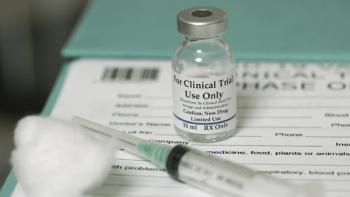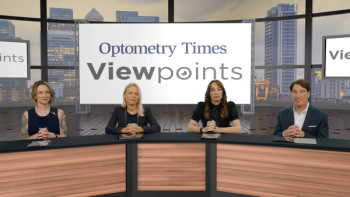
AI therapy planning support assistant launched by deepeye Medical receives CE mark
deepeye TPS is designed to close the gap between real-world outcomes and trial data by reducing patient dropout.
German healthtech company deepeye Medical’s predictive artificial intelligence (AI) therapy planning assistant deepeye TPS (Therapy Planning Support) has received CE mark (Class IIa) from the EU Medical Device Regulation after certification by the Notified Body Kiwa Assurance.1 The assistant is designed to close the gap between real-world outcomes and trial data by reducing patient dropout via enhancing efficiency and, potentially, the effectiveness of intravitreal injection therapy planning, according to a news release.
“This regulatory milestone of the first predictive AI assistant for therapy management shows that Europe can be innovative,” said Manuel Opitz, CEO of deepeye Medical, in the release. “We are happy to offer ophthalmologists across Europe our AI assistant, supported by our partners, in their daily work of driving clinical outcomes and therapy adherence.”
deepeye TPS is the result of inspiration sparked by the IVI-Portal of the Eye Center at St. Franziskus-Hospital Münster, which has helped triple visual acuity gains and double therapy adherence compared to other real-world studies when conducting double readings of optical coherence tomography (OCT) imaging. To date, deepeye TPS has been trained on thousands of patient cases from more than 200 retina centers and has been clinically validated, the release stated. Collaboration projects with Novartis, Bayer, and Roche have aided in this clinical validation of deepeye TPS.1
When using the AI therapy planning assistant, medical assistants send SD-OCT scans of neovascular age-related macular degeneration (AMD) through the system in 1 to 2 clicks. After upload, the AI assistant analyzes the automatically pseudonymized OCT and generates a report that contains the assessment of disease activity for one-glance therapy decision support, biomarker visualization for explainability of AI recommendation, 12-month therapy need prognosis to support patient education, trend diagrams on therapy progress, and text summary in order to accelerate documentation.1
In providing this data to health care professionals, deepeye Medical cites the advantages of using the AI assistant in its cost-effectiveness, compatibility with all common OCT devices, user-friendly for medical staff, and saving time by supporting treatment planning and patient education. The assistant is available in Heidelberg Heyex2 AppWay, with the company planning to roll out connections for Topcon Harmony and ZEISS FORUM, among other OCT imaging platforms. The company plans to utilize these partnerships to make deepeye TPS available globally once regulatory approval is achieved in other countries outside of Europe.1
Another product that leverages AI that is available at deepeye Medical is deepeye Research, which is designed to empower retinal therapy study teams with actionable insights through the means of utilizing advanced AI in complex datasets.2 The AI solution builds on proven methodologies that are involved in major phase 3 and IV anti-VEGF trials in the EU. The solution works within the 4 pillars of advanced retinal research, which include comprehensive data input; anonymized, standardized output; an AI platform for research; and AI-powered insights. For data input, deepeye Research is integrated with large, heterogeneous OCT imaging and clinical datasets, with the output being anonymized, standardized, and enhanced imaging data.2
References:
deepeye TPS receives CE mark. News release. deepeye Medical. May 21, 2025. Accessed May 27, 2025.
https://www.deepeye-medical.com/news/deepeye-tps-receives-ce-mark deepeye Research. deepeye Medical. Accessed May 27, 2025.
https://www.deepeye-medical.com/deepeye-research
Newsletter
Want more insights like this? Subscribe to Optometry Times and get clinical pearls and practice tips delivered straight to your inbox.













































.png)


